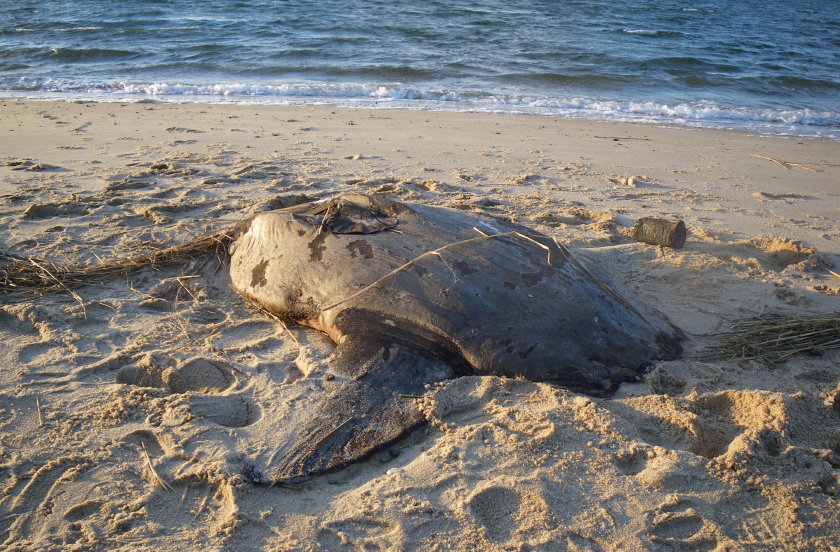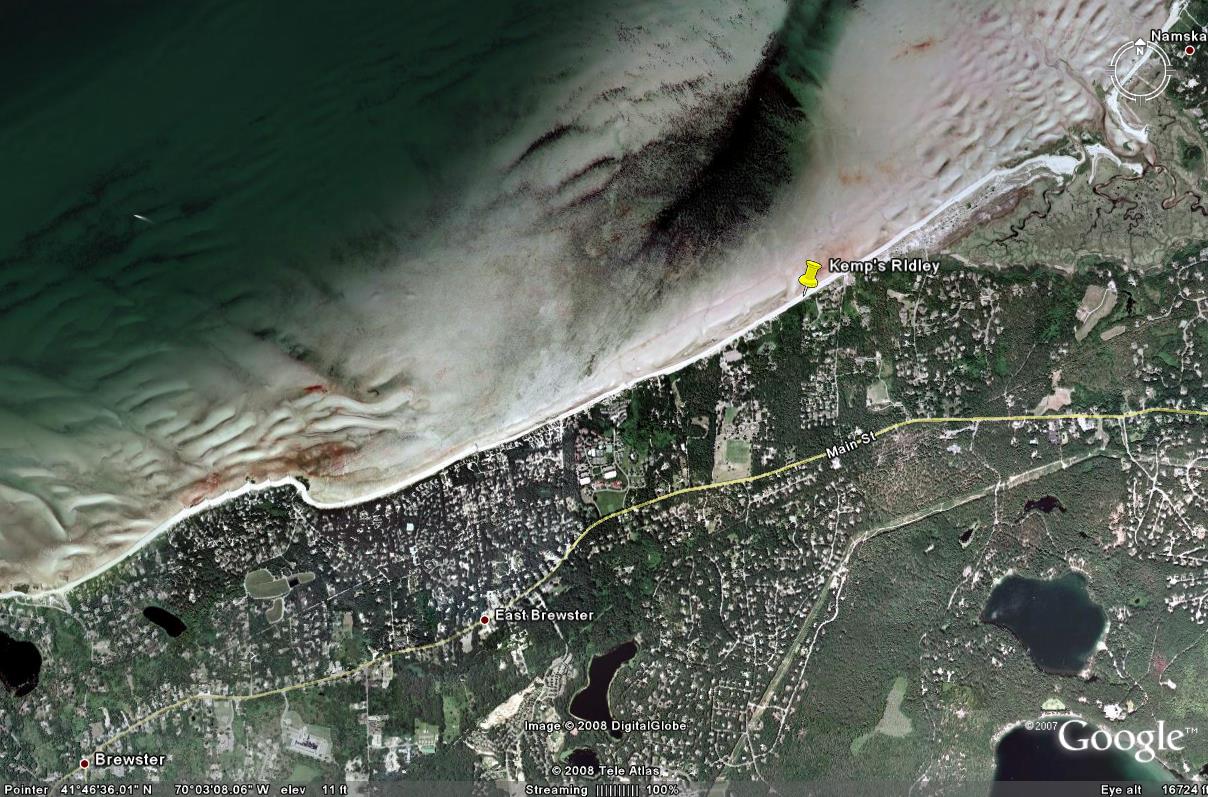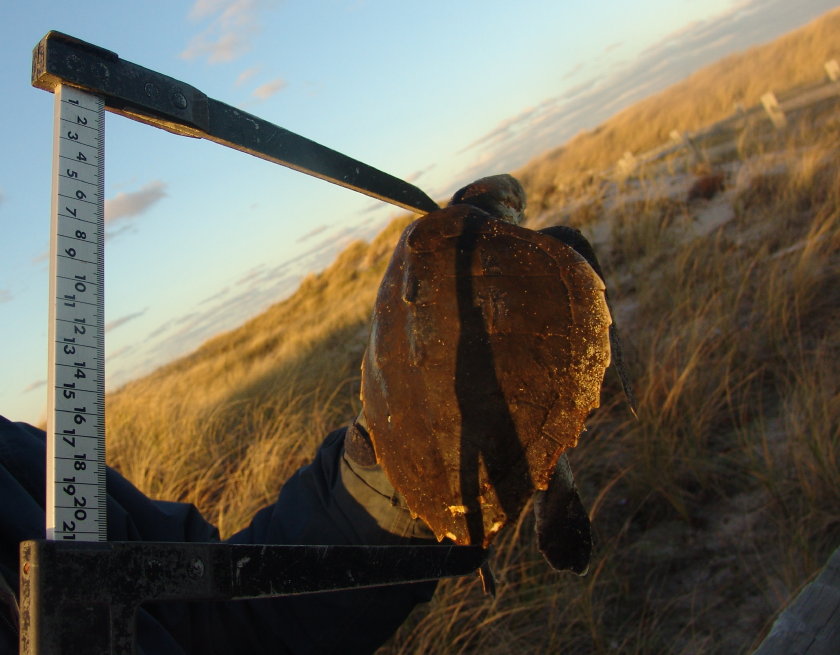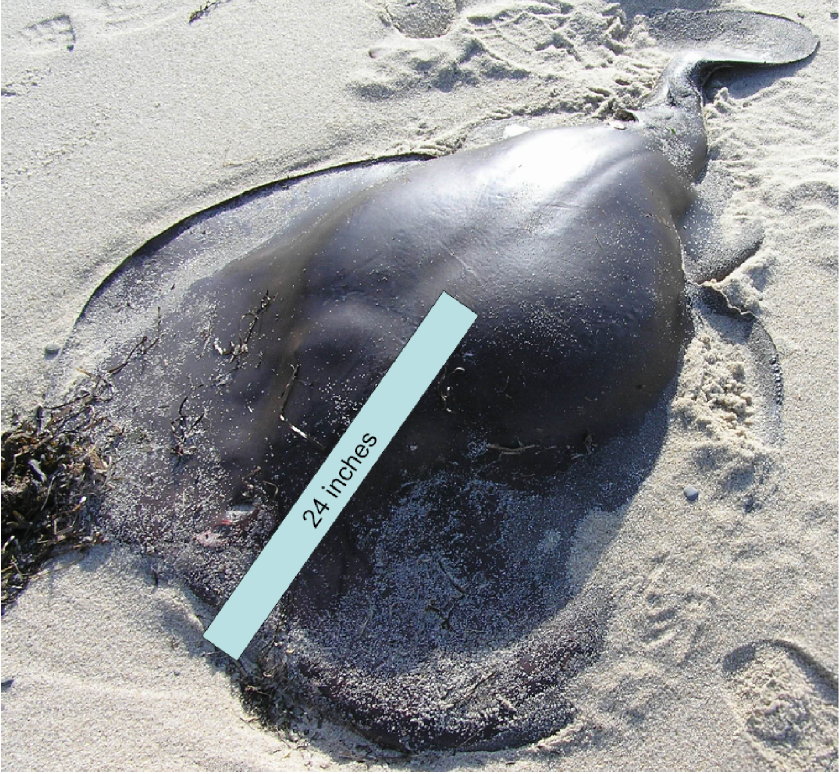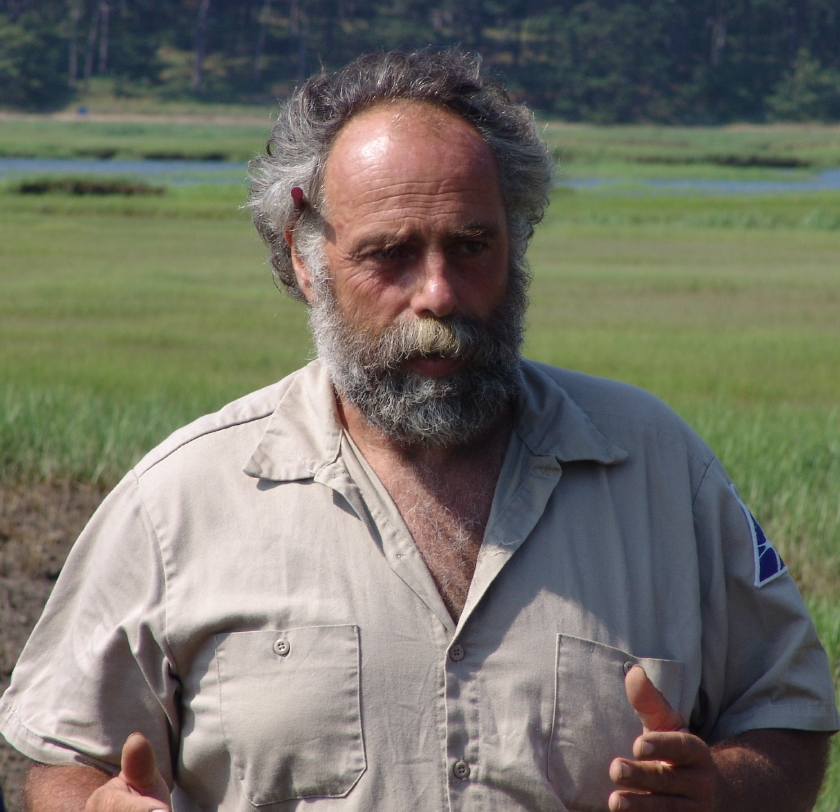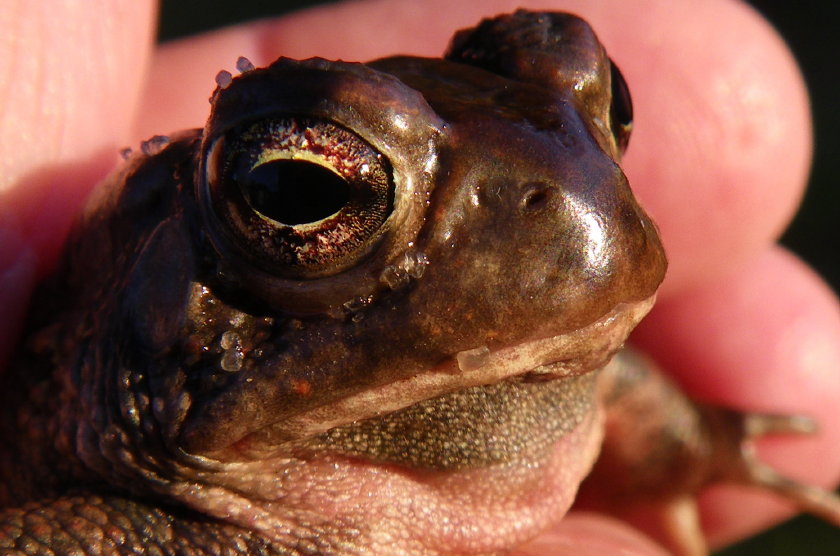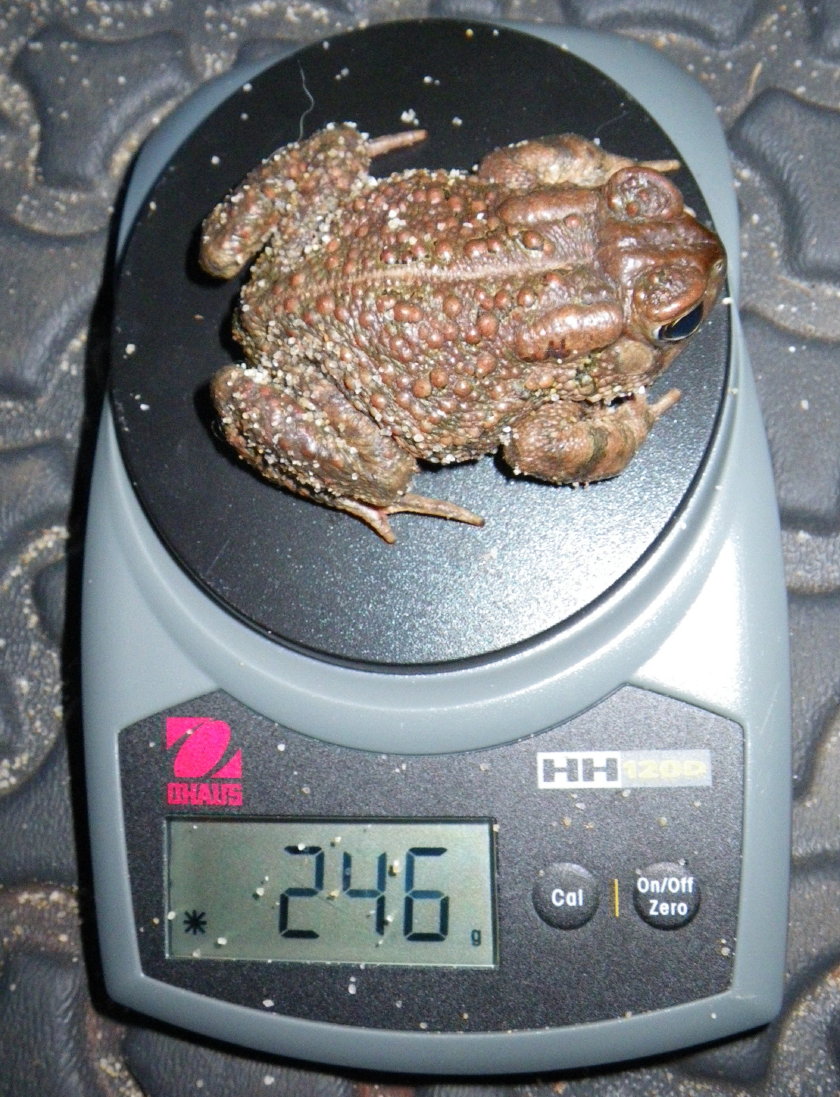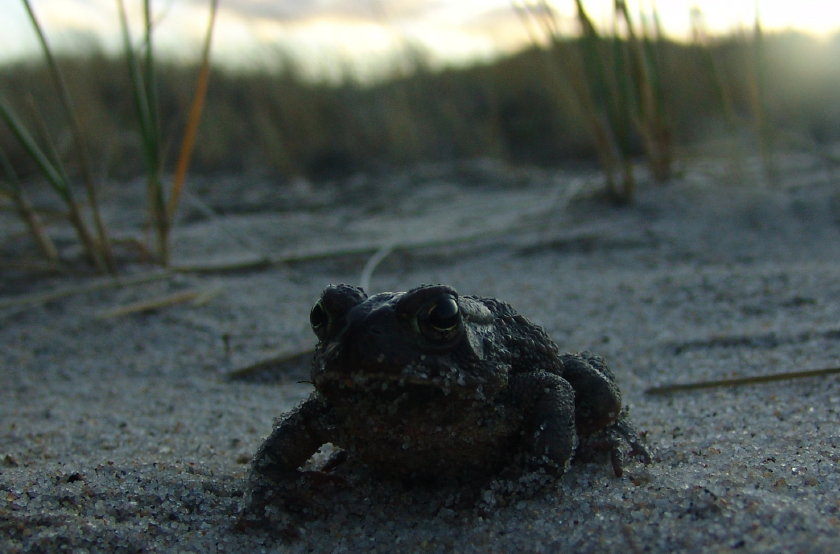Stranded Ocean Sunfish (Mola mola)
When autumn winds churn Cape Cod Bay each November, that seemingly placid sea broils in angry froth and surrenders cherished secrets along its high tide wrackline. This year has been no exception, and in fact has offered more than its annual share of ocean treasures. From a large blue shark to electric torpedo rays, interesting critters have dotted bayside beaches from Provincetown to Bourne.  Large ocean sunfish (Mola mola) joined the castaways as reported in Turtle Journal on November 1st [Exotic Ocean Sunfish (Mola mola)] and November 12th [Two Giant Ocean Sunfish Wash Up on Cape Cod Beaches].  The team confirmed the stranding of yet another sunfish on Thursday at Boathouse Beach on South Wellfleet’s Lieutenant Island.
Ocean Sunfish on Boathouse Beach, Lieutenant Island
Lieutenant Island’s north facing beach takes a beating each fall and winter as prevailing north and northwest winds pound the shoreline. So, any research visit to Wellfleet includes a quick survey of this area. As we crossed the footpath by the boathouse, a good-sized ocean sunfish occupied the spot where family bathers congregate each summer. The rising tide lapped a few feet below the carcass, preparing to reclaim this secret on the next cycle. We plan a revisit on Friday’s low tide to attempt a necropsy to determine … if we can … the cause of death of this fourth large ocean sunfish we have encountered in November. Hopefully, the sea will cooperate.
Click Here to View Video in High Quality
Stranded Ocean SunfishÂ
We took some general, preliminary measurements in case the bay decides to permanently retrieve its treasure. We made the mistake of not doing so at the Shirttail Point ocean sunfish early this month because its necropsy had been scheduled for the next day. Spring tides reclaimed that animal before the scientific team could reach it. We won’t make that mistake a second time.
Skin Discoloration Suggests Older Carcass
This Lieutenant Island ocean sunfish measured 6 feet 1.5 inches from the tip of its snout to the trailing edge of its caudil fin. It measured 7 feet 4 inches from the bottom of its anal fin to the top of its dorsal fin. As you can see from the photograph above, its skin shows discoloration and cellular breakdown hinting that the carcass has been bouncing around the bay for some time. We’ll know with more certainty after Friday’s necropsy.
Click Here to View Video in High Quality
Sunset Sea Turtle Patrol
The wind backed to the west for Thursday night’s sea turtle patrols, still whistling in at over 15 knots. A few sea turtles had come in during the day scattered from one surprising ridley at Ballston Beach in Truro on the ocean side to another Kemp’s ridley at Linnell Landing in Brewster. A green sea turtle also appeared, unusually encrusted with barnacles and algae; the greens we find each fall are normally pristinely clean as though they had just emerged from a car wash. While the Turtle Journal team found no sea turtles on our legs of the patrol from Great Island in Wellfleet to Ryder Beach in Truro, the stunning, unspoiled beauty of a Cape Cod sunset unlittered by sights of human civilization creates a balanced serenity in an otherwise unruly, frayed and jaded world.
